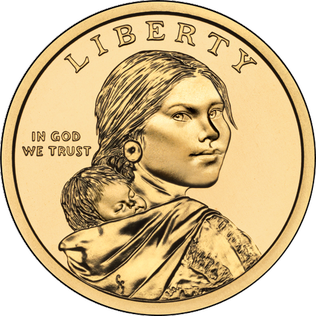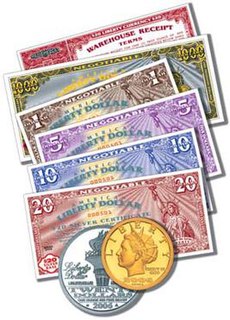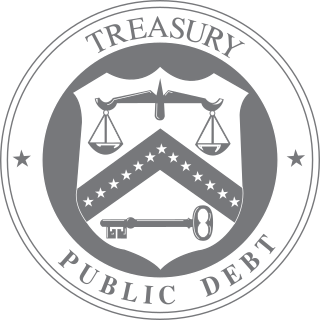| Private | |
| Industry | Wholesale trade |
| Founded | 1973 |
| Headquarters | , United States of America |
Key people | Mark L. Oliari |
| Products | Precious metals |
| Revenue | $6.5 billion |
Number of employees | 50 |
Coins 'N Things, also known as CNT Inc., [1] is a privately held, family-controlled business in Bridgewater, Massachusetts, that was established as a retail shop for coin collectors and is now the largest wholesale vendor of gold in the United States.

A privately held company, private company, or close corporation is a business company owned either by non-governmental organizations or by a relatively small number of shareholders or company members which does not offer or trade its company stock (shares) to the general public on the stock market exchanges, but rather the company's stock is offered, owned and traded or exchanged privately or over-the-counter. More ambiguous terms for a privately held company are closely held corporation, unquoted company, and unlisted company.

Bridgewater is a town located in Plymouth County, in the state of Massachusetts, United States. As of the 2010 U.S. Census, the town's population was 26,563. Bridgewater is located approximately 25 miles (40 km) south of Boston and approximately 35 miles east of Providence, Rhode Island.

Gold is a chemical element with the symbol Au and atomic number 79, making it one of the higher atomic number elements that occur naturally. In its purest form, it is a bright, slightly reddish yellow, dense, soft, malleable, and ductile metal. Chemically, gold is a transition metal and a group 11 element. It is one of the least reactive chemical elements and is solid under standard conditions. Gold often occurs in free elemental (native) form, as nuggets or grains, in rocks, in veins, and in alluvial deposits. It occurs in a solid solution series with the native element silver and also naturally alloyed with copper and palladium. Less commonly, it occurs in minerals as gold compounds, often with tellurium.
Coins 'N Things was started in 1973 by Louis Oliari, an engineer and coin collector. His teenaged son Mark had also become deeply engaged in coin collecting, and the father thought that if he indulged his son's hobby interest by operating a small storefront coin trading shop, Mark would eventually "get bored" with the hobby and "get [it] out of [his] system.” However, after high school, Mark Oliari went to work in the business full-time and later his father left his corporate job to join him. [2]
Some time after both Oliaris had started working in the business full-time, Coins ’N Things entered the wholesale metals market. While Louis Oliari preferred the retail coin business, Mark Oliari enjoyed trading gold with investors, jewelers, and businesses that needed gold as a raw material. [2] As the wholesale business grew, it began to attain the reputation and financial stature needed to be a leader in that industry. In 2002, the United States Mint approved Coins 'N Things to become one of 11 businesses worldwide authorized to buy American Eagle silver bullion coins for distribution; at that time, qualifications for that authorization included a substantial retail customer base and net worth of at least $5 million.
An investor is a person that allocates capital with the expectation of a future financial return. Types of investments include: equity, debt securities, real estate, currency, commodity, token, derivatives such as put and call options, futures, forwards, etc. This definition makes no distinction between the investors in the primary and secondary markets. That is, someone who provides a business with capital and someone who buys a stock are both investors. An investor who owns a stock is a shareholder.

The United States Mint is a unit of the Department of Treasury responsible for producing coinage for the United States to conduct its trade and commerce, as well as controlling the movement of bullion. It does not produce paper money; that responsibility belongs to the Bureau of Engraving and Printing. The Mint was created in Philadelphia in 1792, and soon joined by other centers, whose coins were identified by their own mint marks. There are currently four active coin-producing mints: Philadelphia, Denver, San Francisco, and West Point.

The American Silver Eagle is the official silver bullion coin of the United States.
After his father's death in 2008, Mark Oliari closed the retail shop to focus exclusively on metals trading. A line of credit from Wells Fargo provided the financial resources needed to pursue U.S. government business on a large scale. In 2010 the business obtained approval to sell gold to the U.S. federal government. [2]

A line of credit is credit source extended to a government, business or individual by a bank or other financial institution. A line of credit takes several forms, such as overdraft protection, demand loan, special purpose, export packing credit, term loan, discounting, purchase of commercial bills, traditional revolving credit card account, etc. It is effectively a source of funds that can readily be tapped at the borrower's discretion. Interest is paid only on money actually withdrawn. Lines of credit can be secured by collateral, or may be unsecured.

Wells Fargo & Company is an American multinational financial services company headquartered in San Francisco, California, with central offices throughout the United States. It is the world's fourth-largest bank by market capitalization and the fourth largest bank in the US by total assets. Wells Fargo is ranked #26 on the 2018 Fortune 500 rankings of the largest US corporations by total revenue. In July 2015, Wells Fargo became the world's largest bank by market capitalization, edging past ICBC, before slipping behind JPMorgan Chase in September 2016, in the wake of a scandal involving the creation of over 2 million fake bank accounts by Wells Fargo employees. Wells Fargo fell behind Bank of America to third by bank deposits in 2017 and behind Citigroup to fourth by total assets in 2018.
In fiscal year 2011, the company became the U.S. federal government's largest supplier of precious metals, with government gold sales that accounted for about half of the $3.8 billion in contracts to supply silver and gold to the United States Mint during the year. [2] [3] Coins 'N Things ranked number 39 on the list of the top 100 contractors of the U.S. federal government for that same fiscal year, with $1.89 billion in obligations from the government, all from the Treasury Department. It was the single largest contractor to the Treasury Department [4] and the largest gold vendor in the U.S. [3]

A fiscal year used by governments for accounting and budget purposes, which varies between countries. It is also used for financial reporting by business and other organizations. Laws in many jurisdictions require company financial reports to be prepared and published on an annual basis, but generally, do not require the reporting period to align with the calendar year. Taxation laws generally require accounting records to be maintained and taxes calculated on an annual basis, which usually corresponds to the fiscal year used for government purposes. The calculation of tax on an annual basis is especially relevant for direct taxation, such as income tax. Many annual government fees—such as Council rates, license fees, etc.—are also levied on a fiscal year basis, while others are charged on an anniversary basis.

Silver is a chemical element with the symbol Ag and atomic number 47. A soft, white, lustrous transition metal, it exhibits the highest electrical conductivity, thermal conductivity, and reflectivity of any metal. The metal is found in the Earth's crust in the pure, free elemental form, as an alloy with gold and other metals, and in minerals such as argentite and chlorargyrite. Most silver is produced as a byproduct of copper, gold, lead, and zinc refining.

The Department of the Treasury (USDT) is an executive department and the treasury of the United States federal government. Established by an Act of Congress in 1789 to manage government revenue, the Treasury prints all paper currency and mints all coins in circulation through the Bureau of Engraving and Printing and the United States Mint, respectively; collects all federal taxes through the Internal Revenue Service; manages U.S. government debt instruments; licenses and supervises banks and thrift institutions; and advises the legislative and executive branches on matters of fiscal policy.
The business has about 50 employees, including Mark Oliari, his wife Patty, and three children. There are no outside investors. As of 2011, estimated annual revenue was $6.5 billion. The company does not report its net revenues or profits, but Mark Oliari told news media that it retains about 0.25% of the value of transactions involving private customers and a bit less from sales to the government. Gold is obtained from producers in the United States and Canada, with about 40% coming from a refinery owned by the Canadian government. [2] [3] Due to concerns about security, the company does not have a website.

In accounting, revenue is the income that a business has from its normal business activities, usually from the sale of goods and services to customers. Revenue is also referred to as sales or turnover. Some companies receive revenue from interest, royalties, or other fees. Revenue may refer to business income in general, or it may refer to the amount, in a monetary unit, earned during a period of time, as in "Last year, Company X had revenue of $42 million". Profits or net income generally imply total revenue minus total expenses in a given period. In accounting, in the balance statement it is a subsection of the Equity section and revenue increases equity, it is often referred to as the "top line" due to its position on the income statement at the very top. This is to be contrasted with the "bottom line" which denotes net income.
Profit, in accounting, is an income distributed to the owner in a profitable market production process (business). Profit is a measure of profitability which is the owner’s major interest in income formation process of market production. There are several profit measures in common use.

Gold extraction refers to the processes required to extract gold from its ores. This may require a combination of comminution, mineral processing, hydrometallurgical, and pyrometallurgical processes to be performed on the ore.









